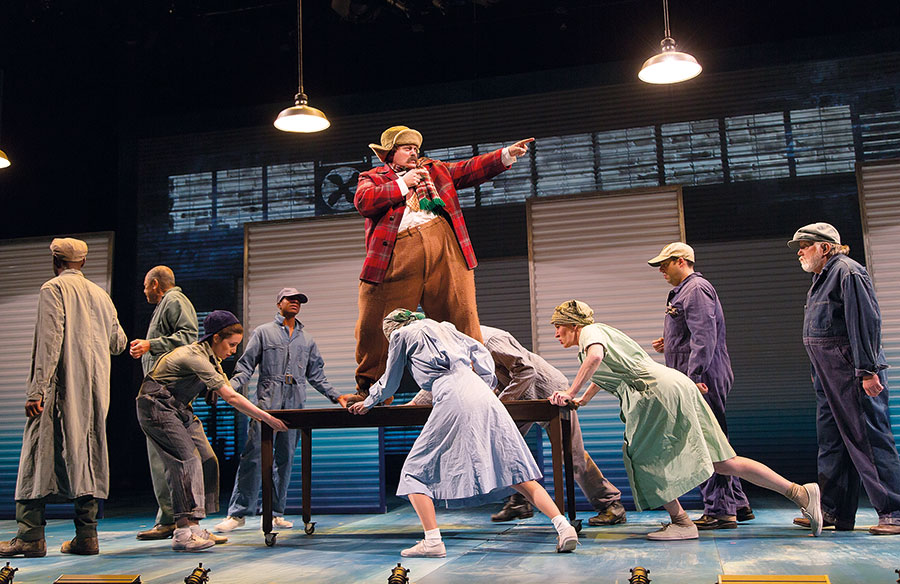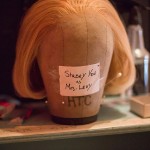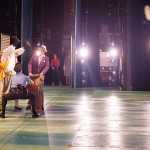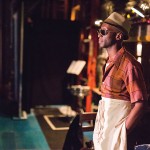The biggest problem was always obvious.
John Kennedy Toole’s A Confederacy of Dunces is a novel whose chaotic, throw-everything-at-the-wall style is exactly what endears it to its devoted fans. Toole piles character after character upon subplot after subplot. And his central force is one Ignatius J. Reilly, a figure made indelible to readers by his unpleasantness to all around him. So how, exactly, do you translate all this into a play with a cohesive structure that works dramatically—while still maintaining the flavor of the book?
Through a more than two-year development process, from workshops in New Orleans and New York City to a world premiere at Boston’s Huntington Theatre Company last November, this challenge remained central. The stakes were high for the show’s commercial producers, who were clear from the outset that their sights were set on targets beyond Boston: namely, London and Broadway.
The Huntington, which owns a piece of the show and will continue to help shape it creatively, identified the issue when the play was first pitched by David Esbjornson, a director whose production of All My Sons was a hit for the theatre in 2010.
“My concern was that it was going to play too episodically,” said Peter DuBois, the theatre’s artistic director, “and that it wasn’t necessarily going to cohere narratively. There’s so much in the book, and the book is so episodic, that I was just concerned it was going to be these short, choppy scenes with a lot of audience address…more like story theatre.”
The creative team’s response to this basic issue would dictate all elements of the show’s staging. (Spoiler alert: Attracting a TV star to play the lead didn’t hurt.) And its success or failure as an adaptation would be a key theme in reviews of the show, which became a very high-profile production for the theatre, attracting national attention (i.e., a review from The New York Times).
It’s not quite right to call the original novel a cult classic, as it earned the most mainstream of literary honors, the Pulitzer Prize, after its publication in 1980. But it has that combination of impassioned fans and selective appeal that is familiar from the world of niche art. “I think Dunces is the classic book that people either love and just read it cover to cover, or—I have friends who have said they tried starting the book 10 times and couldn’t get past page 50,” DuBois said.
Indeed, after the show was announced in the Huntington’s season, a subscriber politely mailed back his tickets with a note suggesting that perhaps they could go to “a younger” patron.
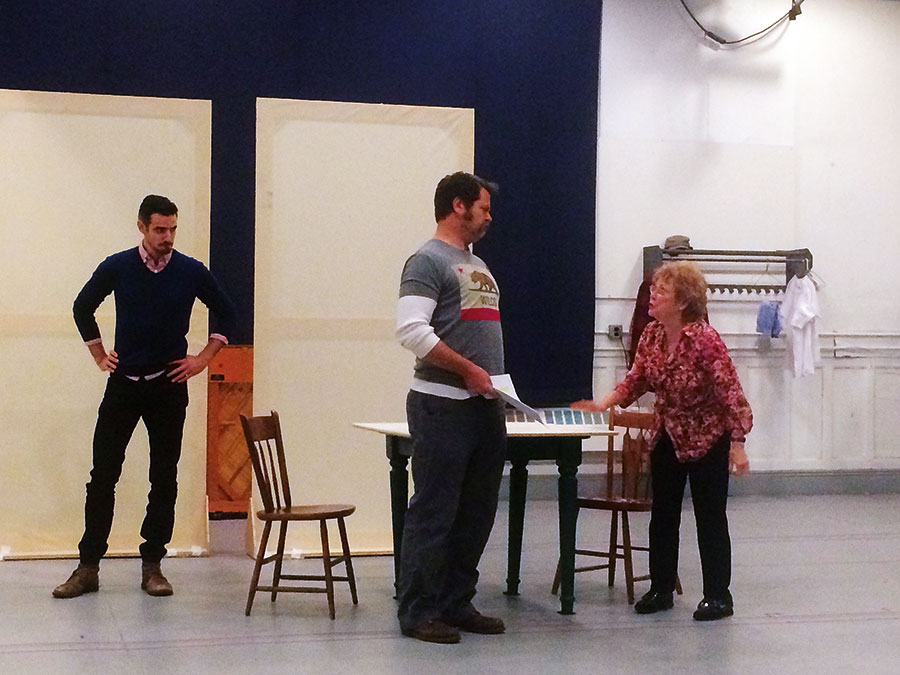
Dunces was written in the early 1960s, but its author, a neat, genteel academic, got nowhere in his attempts to publish it and eventually killed himself in 1969. But his mother never gave up on his typewritten tome, and advocated on its behalf until she won the interest of LSU Press.
One much-loved element of the novel is its pungent depiction of early-’60s New Orleans, in all its chaotic color and hazy adventurousness. Its center of gravity is Ignatius, an egghead man-child who seems indefinitely trapped in his mother’s house after eight years of college have earned him a master’s degree in philosophy but precious little in the way of social skills or traditional hygienic practices. (Flatulence is a motif.) The text has a circular structure, hopping between comic plotlines including his trouble with local police, the demands he makes on his long-suffering mother, and an off-kilter Civil Rights uprising. Ignatius’s failed forays into the world of work provide a key story driver, as does his long-running correspondence with a sort-of girlfriend from his college days, Myrna.
Other colorful characters include the hapless Officer Mancuso; a put-upon man named Burma Jones, who is hassled by his employer and by police; and the aspiring striptease artist Darlene, whose act requires the participation of a cockatoo.
Dunces has resisted adaptation in the past, though previous efforts were slated for the screen. John Belushi, Will Ferrell, and Zach Galifianakis are among those who’ve been tapped for the role of Ignatius in various prospective film versions that have come to naught. Director Steven Soderbergh got as far as cowriting a script and holding a table read at the Nantucket Film Festival with Ferrell in 2003, but later called the foundering project “cursed” and memorably concluded that it had “bad mojo on it.”
Yet Soderbergh was on the team of commercial producers—which also included Robert Guza (longtime head writer on “General Hospital”) and John Hardy (executive producer on Hollywood hits including Ocean’s Eleven and Erin Brockovich, both helmed by Soderbergh)—who joined to bring the book to the stage. Playwright Jeffrey Hatcher (Three Viewings, Mrs. Mannerly), who had worked with Esbjornson on the stage version of Tuesdays With Morrie in 2002, was brought in to write the adaptation.
In an email seeking to assuage DuBois’s early concerns, Esbjornson conceded that “it isn’t surprising that queries and concerns would arise around a production of this play,” and added that what “makes the story work are the very things that may disturb others.” Esbjornson further observed that the novel’s many characters indeed have something in common: They all feel stuck, but their situations ultimately improve because of Ignatius’s ignoble adventures.
For the stage version, Esbjornson and Hatcher zeroed in on the relationship between Ignatius and his mother as the heart of the piece. “If it has to do with Ignatius and his mother—him getting out, their relationship severing, and his escape from New Orleans—then you keep it,” Hatcher said of his editing process.
Hatcher also looked for ways to weave the disparate plot strands together. Multiple subplots—Ignatius’s attempt to inspire a gay-themed political rebellion, Burma Jones’s effort to get his exploitative employer busted for her illicit trade in pornography, Darlene’s long-delayed striptease debut—were merged into one riotous sequence late in the play. Then, to provide a series of plot payoffs in quick succession, Hatcher created an all-hands-on-deck scene at the Reilly household in which a procession of main characters appear and happy endings abound.
“We’ve had a bunch of rapid scenes,” Hatcher says, describing what the audience has experienced up to that point in the play, “and now we’re going to sit here for about eight minutes and have one of those classic living-room scenes that you remember from 800 plays. I think it’s good to give people these anchor moments, because even in a play like this, where you want a kaleidoscopic view of the world and its people, sometimes you want to say ‘stop.’”
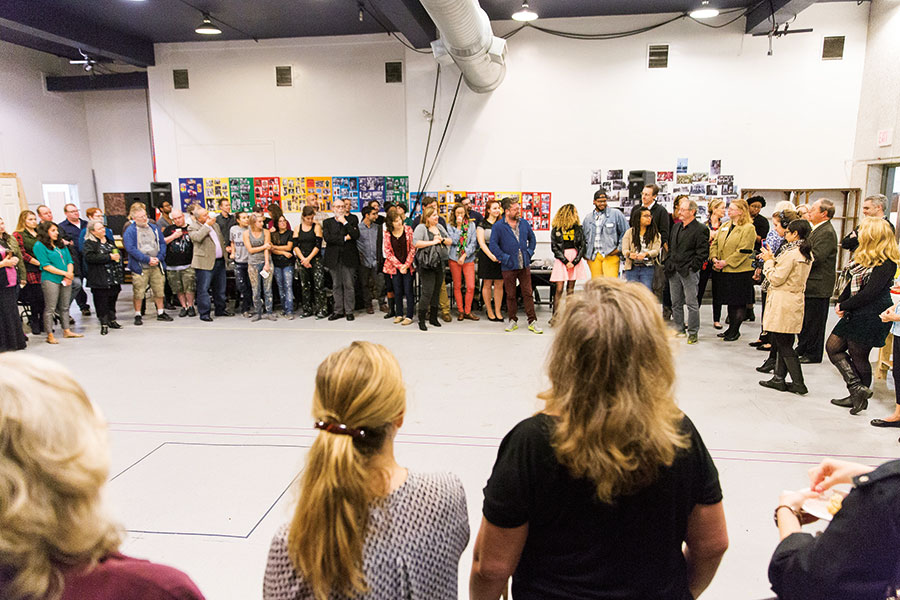
DuBois said he signed the Huntington on to the project after seeing a New York workshop of the script in 2013. Nick Offerman, a star of the NBC comedy “Parks and Recreation,” was by then on board to play Ignatius. (It would be his first return to the stage after the show’s series finale.)
As the mid-level Midwestern bureaucrat Ron Swanson, whose love for nature and red meat is equaled by his distaste for big government and small talk, Offerman got laughs on TV with a soft-spoken portrayal that leaned heavily on deadpan. It was not at all obvious that a similar approach would work for Ignatius. But Esbjornson directed Offerman not to “move any more than he absolutely had to” during that workshop, establishing the character as the center of gravity around which other characters revolved. “As soon as that happened, almost immediately other things began to materialize. Other characters’ actions became more important and focused,” the director recalled. Offerman later said he played Ignatius as intellectually formidable but physically helpless, with “tiny, Tyrannosaurus Rex arms.”
Offerman cited Hatcher’s “expert distillation of what is certainly an impossible text to render onstage in total.” While Toole’s writing is full of clever turns of phrase that could end up overwhelming a theatregoer, Offerman said, “Everything that’s in the play serves the story arc that [Hatcher] has gently teased from the book, as though he slickly extracted the skeleton from a Louisiana gator whilst leaving the beautiful monster intact.”
The alligator wrestling would continue until opening night, and beyond. Another major decision came out of the New York workshop: For the sake of expediency, the company pantomimed all the props, but Esbjornson liked how it looked and kept it for the production. The lack of props—and Riccardo Hernandez’s sparely conceived scenic design, made up largely of tables, chairs, and moving panels, with no fixed scenery—would facilitate the many scene transitions the script required. It would also provide a contrast for the dense busy-ness that would manifest elsewhere.
This also solved the problem of the cockatoo. A climactic scene featured an altercation between the bird and Ignatius. Esbjornson summed up the difficulty: “How do you stage a fight with a bird?” Introducing puppetry or a mechanical cockatoo seemed to invite excessive tech time and inflated expense, and a decent risk of it not coming off. This is a comic play, but the laughs are meant to be intentional. So they mimed a slow-motion fight sequence, with help from projected images of a menacing cockatoo.
The decision to forgo props rippled through the design process, and even the script. Michael Krass’s costumes would have to be highly specific and vividly colorful, helping make the parade of characters instantly identifiable. And Hatcher’s script in turn needed to explicitly evoke more of the physical reality; instead of Ignatius merely producing his dirty old bedsheet, for instance, the missing prop had to be identified and described with dialogue.
A very detailed sound design also became crucial, from the sound of bottles opening and drinks being poured to the clatter from a car accident. Sound designers Mark Bennett and Charles Coes began working with the actors on these cues during the second week of rehearsals. “It was a technical challenge not just in terms of getting the content, which is a big job in and of itself, but coordinating it so precisely with the actors that it felt seamless and didn’t draw attention to itself. If we succeeded, you often forgot that we were doing it,” Bennett said.
During a seven-day tech and six-show preview period (both extended beyond the Huntington’s typical practice for productions in that space), the actors and designers sculpted their work together. One sound effect–heavy sequence involved two characters, Ignatius and Arnie Burton’s officious Mr. Gonzalez, taking turns using an imagined typewriter. The cues included sounds of paper being loaded, keys striking, a bell ringing, and the cartridge being pushed back after every supposed line of text. Deep into tech, Offerman stood onstage working out how many times he wanted to turn the knob (as if loading paper) before starting to “type”: Was it three times or four? At the final dress rehearsal, the bit wasn’t quite in sync. At the first preview the next night, the execution was tighter. This little tour de force of sound cues would get laughs every night.
To create a highly specific sound environment, Bennett had a series of cigar-sized speakers embedded into the stage. (He experimented for a while with one lodged in Offerman’s fat suit as well.) When Ignatius pantomimed pushing a hot dog cart, a creaking sound emanating from the floor speakers followed him across the stage.
“The trick with all of this, and the thing that really makes it work,” Bennett explained, “is that our ears hear high frequency more directionally. Wherever the high frequency is, [that’s where] your ear is going to go.” So the onstage sound was bolstered by subwoofers located elsewhere, while maintaining the illusion of moving in space with the actor.
Throughout rehearsals and previews, Esbjornson and Hatcher looked for ways to collapse scenes and improve the flow. (By opening night, the first act still had about 15 scenes.) A two-part scene showing Mrs. Reilly’s courtship with a gentleman caller was squeezed into one. Though it included a key plot development referenced later, a farcical scene featuring Officer Mancuso disguised as a nun was cut. (“It ended up being just as funny to hear about it as to see it,” Hatcher said.)
But the basic adaptation challenge still haunted the production. While Offerman’s name would surely give a boost to the Boston run—it was extended by eight shows before a press conference the first week of rehearsals—if the show was to have a long-term future in other markets, it would need to attract fans of the novel. (The built-in affection for the material was clear: During the run, a minor ovation would accompany the first onstage appearance of Ignatius’s iconic hunter’s cap.) But to make something stage-able, Hatcher would inevitably leave out bits that some fans had come to cherish.
Indeed, some trainspotters apparently showed up with a mental scorecard of favorite Ignatius lines. At a talkback following the first preview, a twentysomething audience member remarked icily: “I kept waiting for him to say ‘theology and geometry,’ and he never did, and I was very disappointed in that.” He must not have been too upset, though: Afterward, the young fan was careful to have someone photograph him posing beneath the theatre’s marquee.
As expected, Offerman attracted plenty of attention as soon as he arrived in Boston. In the guise of Ignatius, his owlish countenance was all over town on promotional buttons, posters, and taxicab advertisements. He became a regular at a Huntington Avenue restaurant near the theatre. He was dutifully covered by The Boston Globe when he visited a local woodworking school, and later spoke at its graduation.
In part thanks to his celebrity, there was no drama surrounding the show’s financial success; it was the kind of hit that theatres build successful seasons around. Robust, enthusiastic audiences accompanied the show from previews onward. Hours before the opening-night performance, the theatre announced that A Confederacy of Dunces had already become the second-highest grossing show in its history. Three weeks later it took the top slot, becoming the company’s first show to gross more than $2 million; it was also within striking distance for the title of the theatre’s best-attended production. The Huntington even encountered a situation with which it was unfamiliar: At least one scalping agency started buying up blocks of tickets.
But much of this success came before many people even saw the show, on the strength of the title and its star. A negative critical response could be inhospitable to the producers’ ultimate aim, to take the show to Broadway. If the adapters risked sacrificing some of the novel’s essential feel in exchange for dramatic structure, Charles Isherwood zoomed right in on this dilemma in his New York Times review.
“Mr. Hatcher’s adaptation is deftly structured,” he wrote, but complained that the conflation of storylines was confusing. “Given the ripeness and richness of Toole’s dialogue, it’s a bit surprising that Mr. Hatcher only lifts small spoonfuls of it… [T]he key ingredient—Toole’s sensationally original voice—has mostly gone missing in this adaptation.” People who hadn’t read the book might enjoy it best, he added.
But Frank Rizzo, writing in Variety, thought the show had found a good balance between source and adaptation. “Playwright Jeffrey Hatcher has already done an impressive job of editing and shaping the story for the stage, retaining its essence as well as some of its dandiest dialogue,” Rizzo wrote, though he added that it needed more work to attract those who didn’t already know the book.
Boston Globe critic Don Aucoin was less convinced by Hatcher’s efforts to wrangle the novel’s many incidents into a manageable story. “When compressed and combined for the stage as they are here…events take on an arbitrary and self-consciously ‘wacky’ quality,” he wrote. Later, in a think piece about the perils of celebrity casting, he praised Offerman’s performance but questioned the material: “Having landed Offerman for the lead role, did producers—apparently hoping for a Broadway run—underestimate the enormous difficulty of wrestling John Kennedy Toole’s sprawling novel into stage-ready form? The unsatisfying end result suggests they did. More time should have been taken to iron out the show’s shortcomings and to give Dunces a theatrical shape more in tune with the spirit of Toole’s wildly imaginative creation.”
On WBUR’s arts vertical the ARTery, Carolyn Clay observed that “most of the jokes are retained [from the book] along with the rambunctious satire.” Nick Dussault, too, was upbeat in Boston Metro: “While it may not be perfect, this Dunces is as close as you can come to capturing the wild spirit of Ignatius Reilly and his band of misfits.”
So was it too much like the book or too little? Geared too much toward diehards or toward novices? Overly busy, or not busy enough? These questions had framed the artists’ work on the show from Day One. Based at least on critical response, the answers remain elusive. Some critics were cool, also, to the minimalist approach to scenic design and props. It “only works some of the time,” Rizzo wrote. “There’s something deflating about the reliance on a few chairs and tables as the only scenery,” Isherwood agreed, suggesting that the artistic choice was inspired by budgetary constraints.
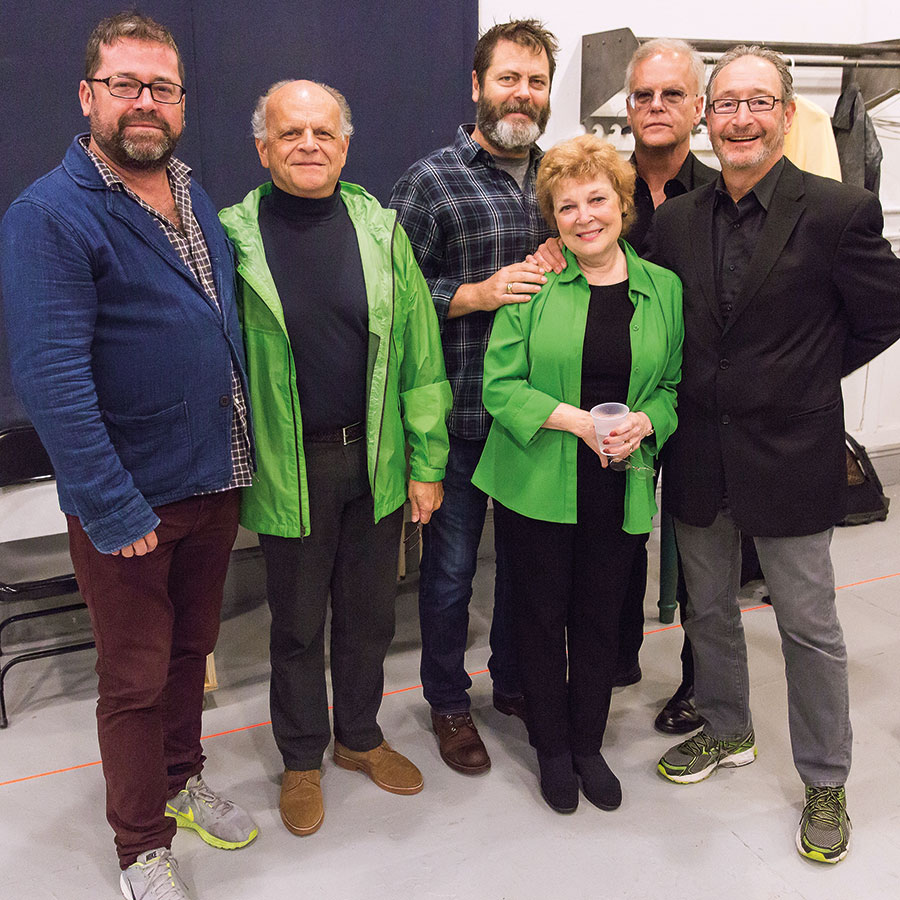
Reflecting on it a few weeks into the run, Esbjornson acknowledged that the text could still use some streamlining. “We feel we managed to get the very difficult second part of the play under control,” he said. “I think we now want to go back and look at the first part of the play and see if we can get the same sort of control over the material. I would like to find ways in which we sit down longer with the characters, perhaps, so you get a little bit of a deeper involvement with them.”
For his part, Hatcher has revisions at the ready. A few days before opening—too late, he said, to incorporate the changes—he noticed more places to combine scenes, not only to cut down on the many transitions but also to signal to the audience that certain disparate plots would eventually intertwine. He’s also sensitive to complaints that the play needs more Toole, and plans to do another pass through the novel hunting for good lines.
It’s also unclear whether the no-prop approach would translate to a commercial run, potentially in a larger house. The hot dog cart, Hatcher said, is one item that audiences seem to want to actually see.
The Huntington, meanwhile, sounds entirely satisfied by the production, as the quibbles of critics pale in importance to having the biggest box-office hit in the organization’s history. In addition to the eye-grabbing top-line numbers, the show expanded the company’s patron base; the Huntington sold 4,800 tickets through its discount for theatregoers aged 35 and younger, the most it’s yet distributed through that promotion.
Producer Guza readily acknowledged the “mixed” reviews. But the numbers speak louder than even Isherwood, he said. “You just can’t disregard that,” he said. “It’s so much bigger than anybody thought. It validates the brand, as they like to say, in an enormous way. Everybody’s talked about it. Even the people who don’t like the play have this grudging admiration for its extraordinary box office, and will acknowledge that there is an audience out there for it worldwide. That’s made everything easier.”
Though grateful for the show’s success at his theatre, DuBois is looking ahead for the project, too, and said he could see various ways forward. “One of the things we’ve talked about is: Does it need an extended workshop? Does it need to go breathe somewhere for three weeks, and then have another production?”
By early December, the producing team was eyeing a production of Dunces in London as early as spring or summer 2016. Though this would provide an opportunity for another round of performance revisions before attempting to tackle Broadway, scheduling considerations factor in: Offerman plans to be in London at that time while his wife, Megan Mullally, works there on a TV series. No one involved with the show seemed inclined to wait.
“We’ve got a lot of momentum right now,” Guza said. “We want to jump on it and go somewhere.”
Jeremy D. Goodwin is a writer based near Boston.

